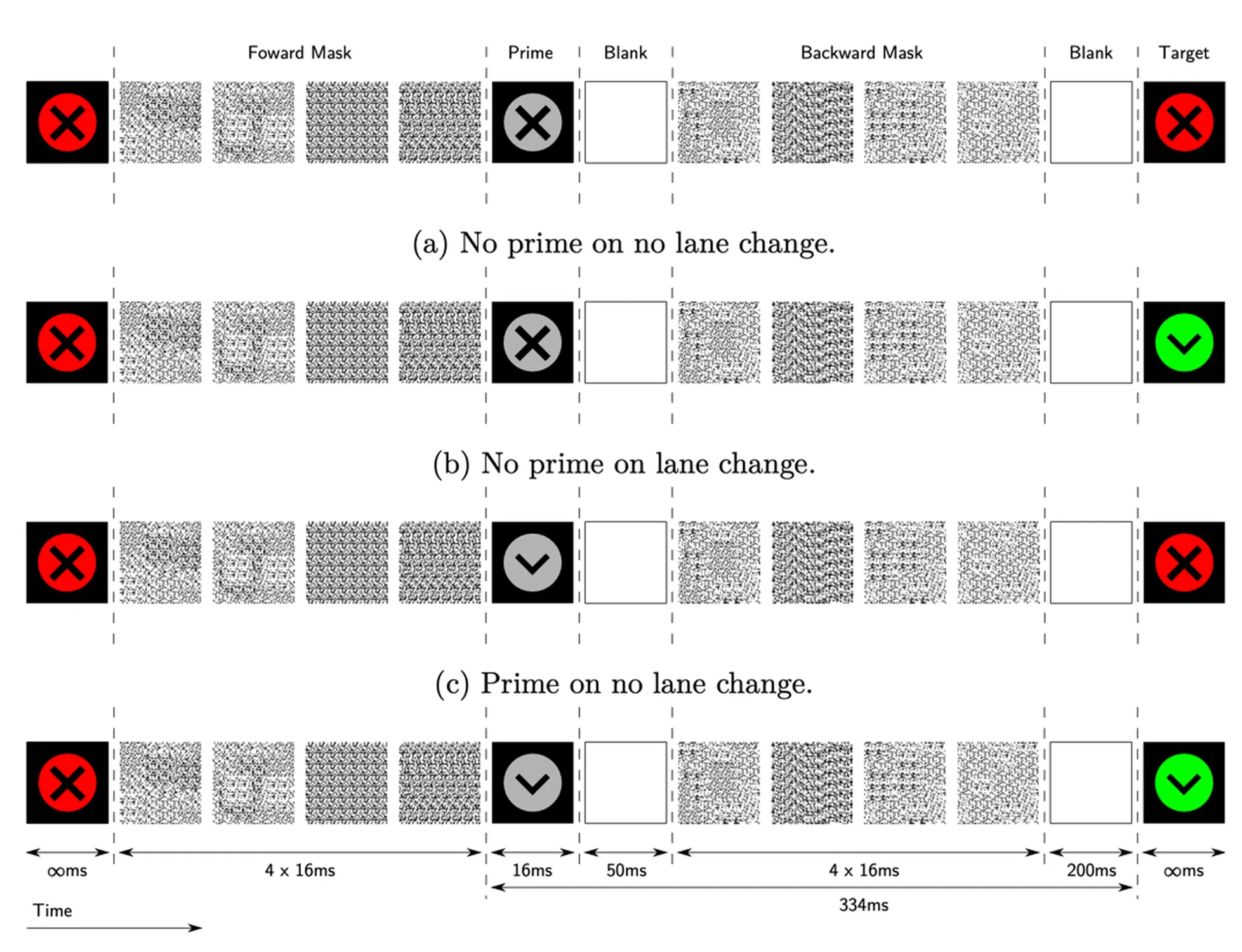Driving Performance Manipulation via Visual Subliminal Cues
Driving safety and performance are critical concerns in modern transportation. With increasing in-vehicle distractions and cognitive loads, researchers are exploring alternative guidance techniques that do not interfere with conscious perception. This blog delves into the concept of visual subliminal cues—stimuli presented below the threshold of conscious awareness—to subtly influence driver behavior. Through a controlled driving simulation experiment, this research assesses whether such cues can enhance reaction times and lane-changing efficiency. The findings suggest that while subliminal priming can be successfully applied, its effectiveness in improving driving performance remains inconclusive.
The Need for Subliminal Guidance in Driving
Driver distraction is a major contributor to traffic accidents, particularly rear-end collisions, which account for nearly 30% of accidents involving another vehicle. Cognitive overload from infotainment systems, mobile devices, and in-vehicle alerts can impair reaction times, making alternative, less intrusive guidance methods essential.
Subliminal priming—where information is processed by the brain without conscious awareness—has been extensively studied in psychology and marketing. The idea is simple: by embedding cues subtly into the driving environment, a driver’s behavior can be steered toward safer decisions without adding to their cognitive load.
How Do Visual Subliminal Cues Work?
Subliminal cues are typically displayed for extremely short durations (e.g., 16 milliseconds), making them imperceptible to conscious vision but still detectable by the brain. In this study, subliminal cues were used in a Lane Change Test (LCT), where drivers were prompted to switch lanes in response to traffic signs.
The cues were presented in three stages:
- Forward Masking – A random pattern appears to mask the cue.
- Subliminal Cue – A brief display of the prime, indicating the lane change direction.
- Backward Masking – Another pattern appears, ensuring the prime is not consciously detected.
This approach ensures that while the driver is not actively aware of the cue, their subconscious may process it and influence their response.

The Experiment: Testing Subliminal Guidance
A driving simulator equipped with OpenDS software was used to conduct the experiment. Participants were assigned to either a test group (with subliminal cues) or a control group (without cues).
Each participant completed a predefined lane-change course with overhead signs providing explicit lane-change instructions. In the test group, subliminal cues corresponding to the correct lane change were flashed before the actual sign appeared.
Metrics Evaluated:
- Lane Change Accuracy – How precisely drivers followed the lane-change instruction.
- Response Time – The duration between the sign’s appearance and the initiation of lane change.
- Driving Stability – Measured as deviations from the expected trajectory.
Findings: Can Subliminal Cues Improve Driving?
The results of the experiment yielded mixed conclusions:
- No significant improvement in lane change response time for drivers exposed to subliminal cues.
- No measurable reduction in lane deviation, indicating that drivers did not subconsciously follow cues more accurately.
- Slight subjective awareness among some participants, suggesting that repeated exposure may have influenced behavior at a conscious level.
These findings align with prior research suggesting that subliminal priming is most effective when the target behavior is predictable or repetitive. However, in dynamic environments like driving, external factors such as steering precision and attention shifts may diminish its effectiveness.
The Future of Subliminal Assistance in Driving
While subliminal cues did not conclusively improve driving performance in this study, the concept remains promising. Potential improvements include:
- Refining cue presentation – Optimizing the timing and contrast of subliminal signals to enhance subconscious processing.
- Multimodal approaches – Combining visual cues with subtle haptic or auditory subliminal stimuli to reinforce priming effects.
- Real-world integration – Testing subliminal priming in real driving conditions rather than simulations to assess practical applicability.
Conclusion: A Subtle Science with Room for Exploration
Subliminal guidance presents an innovative yet complex avenue for enhancing driving safety. While this experiment found no definitive benefits, the methodology paves the way for future refinements. If optimized, subliminal cues could serve as an unobtrusive aid for drivers, improving road safety without cognitive overload.
As vehicle interfaces continue evolving, integrating subliminally guided assistance systems might become an essential step toward accident prevention and driver support. Further research is required to unlock the full potential of this intriguing concept.
References and images available in the original research paper.